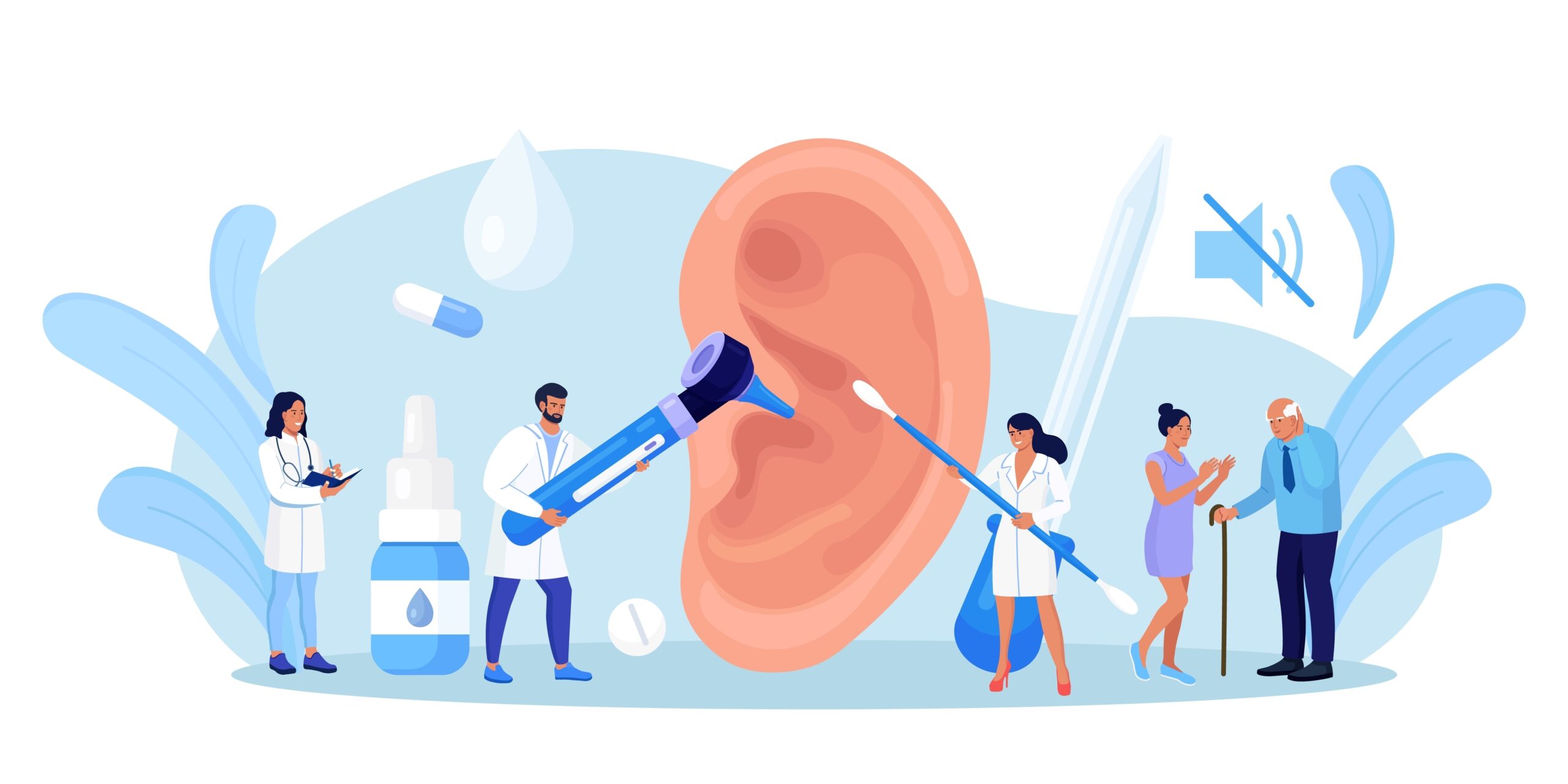Struggling with hearing? Request a hearing test appointment today.
How to Remove Stubborn Ear Wax Blockages at Home

Do you ever feel like your ear is clogged or muffled? Ear wax, also known as cerumen, is a natural substance produced by the ear canal to protect the ear from dust, dirt, and other foreign particles that can damage the ear. However, excessive ear wax buildup can lead to discomfort, hearing problems, and even an infection.
While ear wax blockages are common, they can be frustrating and uncomfortable. In this blog, we will explore the causes of ear wax buildup, how ear drops can help and ear wax removal options.
What Causes Ear Wax Buildup?
There are various causes of ear wax buildup, including:
- Overproduction: Some people produce more ear wax than others, leading to an excess buildup.
- Impacted ear wax: Inserting a cotton bud or any other object into the ear canal can push ear wax deeper into the ear, causing it to become impacted.
- Narrow ear canals: You could have naturally narrow ear canals, making it difficult for earwax to come out of the ear naturally.
- Use of earplugs or hearing aids: Regular use of earplugs or hearing aids can push ear wax further into the ear canal and cause buildup.
So what’s the best way to remove ear wax blockages at home?
Ear Drops vs Olive Oil
Ear drops are a common over-the-counter treatment for compacted ear wax. They work by softening the ear wax, making it easier for the ear to expel it naturally. Some ear drops also have ingredients that help break down the ear wax, making it easier to remove.
Be patient; you will typically need to use the drops for two to three consecutive days to soften ear wax. It is essential to follow the instructions carefully and not to use ear drops for longer than recommended or excessively, as this may cause irritation or damage to the ear canal.
Olive oil is a common home remedy for ear wax buildup and can help soften ear wax. However, while olive oil is generally safe to use, it may not be as effective as over-the-counter ear wax drops.
Ear wax drops contain specific ingredients designed to break down and dissolve ear wax effectively. In contrast, olive oil is not specifically formulated for ear wax removal and bacteria in the olive oil can increase the risk of infection.
The Risks of Cleaning Ears with Cotton Buds
Using cotton swabs to clean your ears is a common practice, but many people are surprised to find out that’s not what they are intended for.
Some of the risks of using cotton buds to clean your ears are:
- You can push ear wax deeper into the ear canal.
- Cotton buds can scratch the ear canal, which can lead to infections.
- You may accidentally push the cotton swab too far and damage your eardrum.
- It’s possible to perforate your eardrum, which could lead to hearing loss.
The NHS advises against using cotton buds or inserting anything into the ear canal to remove ear wax buildup, as it can lead to injury or infection.
When to Seek Professional Help for Ear Wax Blockages
Although it is normally safe to use ear drops at home to soften up wax, if you frequently experience ear wax blockages, it may be a sign of a chronic condition.
Remember, it’s always better to seek professional help if you’re experiencing any discomfort or changes in your ear health. Here are some signs that you should make an appointment with a doctor or audiologist:
- Ear pain, discomfort or discharge: If you’re experiencing intense pain, discomfort, or discharge from your ear, this could be a sign of an infection or a ruptured eardrum that requires medical treatment.
- Changes in hearing: Sudden changes in your hearing, such as muffled or distorted sounds, could be a sign of compacted ear wax.
- Ringing or buzzing sounds: Hearing ringing, buzzing or clicking noises could be a sign of tinnitus, which may or may not be due to excess ear wax.
- Previous ear surgeries or injuries: When ear wax is impacted, it creates a warm, moist environment that can trap bacteria. Previous ear surgeries or injuries, such as a ruptured eardrum, may make you more susceptible to infection.
If you are looking for a simple solution for ear wax buildup, microsuction ear wax removal is a safe and painless way to get instant relief from compacted ear wax. This procedure is carried out by an audiologist and uses a small, gentle suction tool to remove the wax without any discomfort or risk of injury.
Plus, unlike other methods, microsuction doesn’t require the use of ear drops beforehand or any liquid to be introduced into the ear canal. This means it is gentle and safe for removing stubborn ear wax blockages. You can even have microsuction ear wax removal if you have perforated eardrums, grommets or other ear conditions.
When you schedule microsuction ear wax removal with our expert audiologists, you won’t be charged if no ear wax is found. Contact us today to book an appointment at one of our Regain Hearing clinics in London, Kent, or Essex. Simply give us a call or fill out our form to get started.
